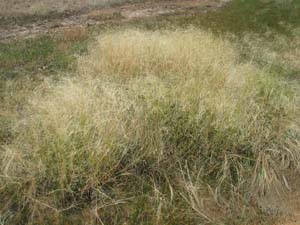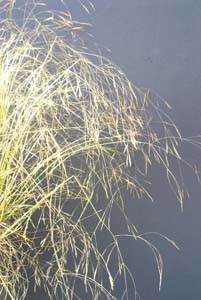Common Blown-grass
Back | Salinity Indicator Plants Home | Common name home | Scientific name home | Photo Gallery | Glossary
Family: Grass (Poaceae syn. Gramineae) |
| Scientific Name: | Lachnagrostis filiformis (syn. Agrostis avenacea) |  Common blown grass Photo: A J Brown  Common blown grass - panicle Photo: A J Brown | ||||||||
|
| |||||||||
|
| |||||||||
|
| |||||||||
| Spikelets small (2.5-4 mm long) on individual fine stalks but clustered towards the ends of the panicle branches; each spikelet with a single, slightly to moderately hairy floret with a very fine, bent awn or bristle attached to its mid-back region and visible beyond the tip of the spikelet.
| |||||||||
Comments: | Occurs across a wide variety of habitats wherever soil is moist to wet e.g. roadsides, drains, swamps, lake edges, including slight to moderately saline conditions. This species is the most common of the Blown-grasses but can often be found growing in association with a number of other species in saline situations e.g. Salt Blown-grass, Adamson’s Blown-grass, Purple Blown-grass. The different species can be difficult to tell apart for the non-expert. A simplified key to some of the species on salt-land can be accessed here - Blown-grass species key. |
Related Link
The Australian Society of Agronomy: Biodiversity and potential utilisation of blown-grasses (Agrostis spp.) in lowland Victoria (external link)


